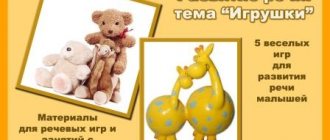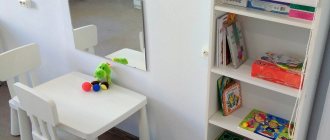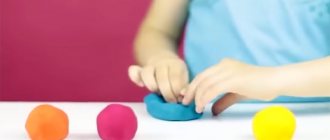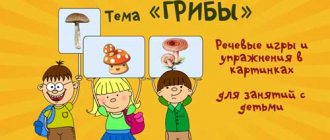Causes of speech disorders
Medical
- Unfavorable course of pregnancy (threat of miscarriage, toxicosis, infection and intoxication, etc.).
- Taking alcoholic beverages and drugs by a pregnant woman.
- Complications during childbirth (premature birth, asphyxia, birth trauma, etc.).
- Head injuries up to three years of age.
- Hearing impairment in a child.
- Features of the structure of the speech apparatus.
- Genetic (hereditary) factor.
- Prolonged thumb or pacifier sucking.
- Left-handedness.
Social
Lack of interest from surrounding adults in communicating with the child.
This manifests itself in an insufficient speech environment, that is, the baby rarely hears the competent, correct speech of an adult, games with the child are not accompanied by explanations. The adult takes care of the child in silence, without focusing on his actions. Incorrect speech by adults in the child’s immediate environment. This can be either incorrect pronunciation of sounds or simple “lisping”
As a result, the child imitates what he hears. Adults' demands to pronounce the sound correctly, without showing the child the correct articulation. This may result in a distorted sound (such as a guttural "R" sound).
Literary aids for mental retardation
When a minor correction is required, you can resort to the above literature. But when the diagnosis is more serious, a special technique is needed. I'm not saying this is a death sentence. No! Remember, dear readers, that it is possible to correct a problem detected early. There are borderline stages when mental formation is delayed.
- Zasypkina A.N. "Partial educational program for working with children 3-4 years old with mental retardation." This is a practical technique with many games that help relax and train important areas of the brain. Gymnastics for attention, thinking, memory, imagination.
- Ekzhanova E.A., Strebeleva E.A. “Correctional and pedagogical assistance for preschool children with mild developmental disabilities.” A number of measures have been proposed for the prevention and correction of minor deviations. The manual will be useful for educators, defectologists and parents.
- Pavlova L.N., Rudenko L.G. "Smart Pictures". The described activities will be useful for general understanding and applicable to solving the problem of problems. The topics “The world around us”, “Professions”, “Seasons” are presented, which help in overcoming the verbal barrier. Thinking, memory, imagination are trained, and horizons are expanded.
These recommendations will help both teachers and relatives of little brats. Success directly depends on how much attention is given to the children.
With this, dear blog readers, let me say goodbye. Remember that in the early stages almost any disease or disorder can be cured. Health to you and your loved ones. Don't forget to subscribe to blog updates.
Articulation gymnastics and pronunciation training
Do special gymnastics for your child’s speech apparatus every day. It’s best to start your next lesson with it. It will prepare the muscles, ligaments, tongue and lips for pronouncing sounds that are difficult for a preschooler.
Gymnastics is aimed at training the chewing, swallowing and facial muscles; they are the ones who jointly participate in the pronunciation process, making speech legible and understandable.
The pronunciation process involves not only the lips and tongue, but also the respiratory organs, chest, shoulders, and vocal cords. Take this into account when performing gymnastics and try to use all components of voice formation equally.
First, parents will have to master all the exercises on their own in order to be able to show the preschooler and achieve clear and clean performance. To develop lips, it is worth doing simple exercises, such as holding your lips in a smile, while keeping your teeth completely closed.
You should start with 30 seconds and gradually hold the smile for 1-2 minutes. Folding the lips into a tube also effectively develops articulation. The principle is the same - at first the tube from the lips should be held for 20-30 seconds, but gradually the duration of the exercise increases.
It will be a little more difficult to fold your lips into a donut, while the teeth close tightly, and the lips are stretched out like a tube, but open, so you can see the teeth. Gradually, the tasks become more complicated and movement is added, which should give mobility to the lips. So, the lips in the tube can be moved in a circle, left and right, up and down, depicting an elephant’s trunk or a pig’s snout.
Elongated lips, folded like a fish, close and open. This results in an entertaining conversation between fish at the bottom of the sea. And if you exhale through your mouth, causing your lips to vibrate from the air flow, you will get a very funny angry horse that snorts just like a real one.
A very fun game will help strengthen a child’s lips, in which the child needs to draw something in the air with a pencil held between his lips. The adult’s task is to guess what the child has depicted.
To train your cheeks, you can play with balloons, inflating your cheeks and holding them in this state for as long as possible. At the same time, you can make funny faces. If you inflate the right and then the left cheek in turn, you will get a hamster, and if you pull both cheeks inside the mouth and hold them in this position, you will get a hungry and funny gopher.
You can practice your tongue by pretending to be a dog. To do this, stick out the tongue and place it relaxed on the lower lip. You can combine this exercise with short inhalations and exhalations through your mouth. If you stick out the tense tip of your tongue, you can play mosquitoes, and moving your tongue up and down and left and right, as well as bending it into a tube will help you not only enjoy spending five minutes of free time, but also train your tongue muscles.
Jaw training can be a pleasure if the baby, together with his mother, tries to imitate a monkey, “hanging” his jaw down as much as possible, or an angry lion, straining his lower jaw in a grin and emitting a characteristic growl.
We help at home
My son and I enjoy practicing at home. We do everything that the speech therapist recommends in a playful way. One of the most common defects is the incorrect reproduction of hissing and whistling sounds. The following exercises can help correct the situation:
- Dudochka. The baby closes his teeth and stretches his lips out as far as possible. At the same time, you need to work with the tongue: up - down.
- Cup. Ask the baby to open his mouth wide, stick out his tongue and try to imitate a cup by bending the edges and tip.
- Let's paint the sky! The little one smiles, then opens her mouth. At the same time, he moves his tongue like a brush across the roof of the mouth.
- The clop of a horse. A very popular pastime. The little one clicks the tip of his tongue like a horse.
- We eat jam. Smile and open your mouth slightly. With the lower jaw motionless, lick the upper sponge.
- Let's brush our teeth! Just do it not with a brush, but with a tongue.
You see, if you correct defects, then do it immediately and forever. Therefore, home lessons are necessary. Only if the tomboy is tired, don’t force it! He shouldn't feel pressured from you. It’s also good to draw along contours. We do this without much pleasure, but it is a useful thing.
How to improve a child's diction?
According to the age norm of 5–6 years, a child should pronounce all sounds well. Alas, articulation itself does not become correct. You need to work on good diction, and the sooner you start working with your baby, the better. Where to begin?
Take care of yourself
A child learns to speak by imitating adults. If you yourself are bad at pronouncing sounds, then your baby will most likely also have problems with them. Listen to yourself, try to pronounce words clearly and correctly, practice problematic sounds. We'll talk about how to do this quickly below.
Do gymnastics
The muscles that are involved in the production of sounds also need training. Be sure to do articulation exercises with your child every day. These exercises should be performed in front of a mirror at first to make it easier to monitor the correct technique. To prevent your child from getting bored, give gymnastics a playful form.
Work on your breathing
Teach your baby to control his breathing. For example, there is a good exercise called “Candle”. Ask your child to imagine that he needs to blow out a big, big candle. Have him place his hands on his tummy, inhale, hold his breath for a second and blow on the flame. Did not work out? Try again together. Now you need to slightly “sway” the flame in different directions. Will it be possible to blow out a few candles? The game is quite simple, but effective, and there are several variations you can come up with. Does your child not like to blow out the candle? Let him imagine himself as a little dragon who needs to use the flame sparingly.
There are a lot of breathing exercises for preschoolers posted in the public domain. Don’t be lazy to find them and do them every day.
Tongue Twisters
These are wonderful and fun exercises that are time-tested and children really like them. We recommend starting with small tongue twisters of three or four words, and gradually move on to longer ones. First, learn how to pronounce them correctly yourself and only then teach your child.
The first time, speak the words slowly and clearly. A little faster the second time. Gradually increase the tempo until the child can pronounce the entire phrase clearly and quickly. Learn tongue twisters unobtrusively - while walking or swimming. You can also play with a ball: whoever throws the ball speaks. To avoid getting bored with your daily exercises, learn new tongue twisters. By the way, then you can arrange a competition: who knows them more and pronounces them better.
Seek help from a speech therapist
Classes must be carried out under the supervision of a specialist, because without special knowledge, using books alone, it is impossible to make sounds for a child correctly. On the contrary, you can achieve the completely opposite effect; correcting such errors is always more difficult. The speech therapist will identify problematic sounds for the baby, determine the causes of the difficulties and explain how to continue studying at home.
Talker Skills
Let's start with the speech. At 3 years old we were already actively babbling. My surprise was when I was reading a long verse, and my son suddenly began to pronounce it ahead of me! Now I don’t remember exactly, something like: “... a mouse, a little mouse, a bunny, a squirrel, a frog, a caterpillar, a midge, a fly, a mole, a magpie - a rattler...”. And he already remembered all this guard. Their memory is not yet clogged with anything; children are able to memorize short poems, short stories and fairy tales at this time. Speak texts of several sentences. It may be clumsy, but it trains your memory!
And in mathematics they also know numbers up to five - this is the minimum! They are able to count objects, some children even do it in reverse order. Of course, addition and subtraction are still a long way off. But even a simple score is an achievement if you take classes with your family. You know, the child’s skills are more likely to be assessed by the family. How does he know the numbers himself? And also, the concepts of long - short, wide - narrow, hard - soft. Although, by the age of 4, the baby learns softness on his own, with bruises and bumps... And his relatives should verbalize it to him, right?
In addition, a fidget can decorate simple objects more or less neatly. These are drawn balls. What about getting to know geometric objects? The kids also remember it with a bang. The most basic ones: circle, square, triangle, rectangle. From the age of 3 they can even imitate. And, of course, colors and body parts. It is necessary. Therefore, if your little one is verbose, confusing the endings, it’s not a problem. But if a little person is not able to remember simple things for his age, this is a reason to turn to a specialist.
What are we doing?
When conducting home exercises, it is important to imagine their structure. As already mentioned, we don’t play all types of games on one day, we use 2-3
Lessons may consist of the following components:
- games to develop fine motor skills, including finger exercises;
- articulation exercises;
- speech breathing training (read about it in the article “Speech development in preschool children”);
- onomatopoeic games;
- hearing development;
- logorhythmics;
- games for vocabulary replenishment and general speech development.
Fine motor skills are well developed by playing with small objects (buttons, beans, hazelnuts, corks, construction sets, mosaics), modeling, and drawing. This is also facilitated by all kinds of finger games (with palms stroking each other, self-massage of the fingers, combining the fingers of two hands), accompanied by funny text - preferably rhyming (more about this in the article “Finger gymnastics for children”).
Articulation exercises are divided into dynamic (when the baby needs to perform some actions with the tongue or lips) and static (the lips or tongue need to hold the position). The latter are much more difficult for children, so adults will have to be patient.
Also among the articulation games there are general ones, which are always useful for all children for the development of the articulatory apparatus, and special ones, which prepare the child’s speech organs for pronouncing specific sounds with which he has a problem. With the help of such exercises, you can significantly strengthen the muscles of the lips, tongue, cheeks, make the tongue mobile and obedient, stretch the short hyoid frenulum (without it, for example, the baby will never pronounce correctly). Read more about such exercises in the article “Articulation gymnastics”.
—
Make these activities fun by writing funny stories about your tongue's life. Let him pick mushrooms, clean his room, turn into a pancake or a cat's back during a fun journey through a magical land.
—
Onomatopoeic games teach a child to regulate the strength of his voice, intonation during pronunciation, develop his hearing and generally provide a lot of fun. You can imitate any sounds: nature (howling wind, rustling leaves), the voices of animals, birds, sounds made by various vehicles or household appliances. To prevent the lesson from being boring, you need to play with imitation. For example, dramatize some funny story.
This way the child will practice the ability to express emotions and supplement his speech with facial expressions and gestures. If you add appropriate movements to such games and select suitable music, you will get a lesson in logorhythmics.
Games for hearing development will help your child not only more easily understand the speech of other people, but also notice mistakes, including in his own speech. To do this, you can guess which object is ringing behind your back, then where exactly it is ringing (right, left, above). The development of phonemic hearing contributes to the skill of determining the presence of sound in a word, its location, and breaking words into syllables.
At the same time, you must remember that the more complex and advanced the problem, the slower progress will be felt. But this only makes the praise even more meaningful. The slightest success is important to the baby. Now the main thing is systematic training, patience and faith in progress. It may not be one hundred percent, but improvements will definitely appear. You just need to make an effort for this.
Let's consider more serious changes
Unfortunately, there are children who have delays not only in their audio pronunciation, but also in their mental nature. This type is called mental retardation or mental retardation. It goes without saying that such little people either speak incorrectly or do not speak at all.
The culprit for this may be intrauterine development. When during pregnancy the mother was under constant stress. The most difficult cause to treat is damage to brain cells.
Medicines can improve the situation by compensating the body’s work with the participation of healthy cells. It’s very difficult and requires willpower from parents. But there is a risk of acquired mental retardation. As a rule, these are dysfunctional families, where a showdown occurs before the eyes of the child.
The best test for identifying this complication is to monitor general development. By the age of 2, a fidget should be able to insert geometric shapes into suitable holes, distinguish body parts and colors. By 3 - the ability to speak. If you suspect serious delays and deviations, you should contact a neuropsychiatrist. He will be able to determine the diagnosis. In addition, a speech pathologist will help.
How are classes going?
First, the specialist gets to know the parents and the baby, establishes contact with the child, and encourages him to communicate. And this is not always easy: some children are too reserved, others are shy or afraid of strangers, others are hyperactive and do not sit still.
Next, the specialist conducts speech therapy diagnostics:
- reveals the child’s ability to perceive information and understand the questions asked (estimates how long the child is looking for an answer);
- assesses vocabulary and gesture capabilities;
- assesses the degree of speech coherence, the number and types of speech errors;
- identifies problems with pronunciation - which groups of sounds are affected, in which parts of words they are pronounced defectively, etc.
Based on the information received, the speech therapist builds an individual plan for working with the child. Most often these are classes 2 times a week lasting from 30 to 45 minutes.
Classes for children 4 years old are conducted in the form of a game and include, if necessary, articulation and breathing exercises, logorhythmic exercises, exercises for producing sounds, the development of fine motor skills, speech breathing and phonemic hearing, and general speech development.
By the age of 5, such classes are no longer carried out only in the form of games - they prepare the child for the fact that he will soon have to sit in lessons at school and complete the teacher’s assignments. Therefore, they also include tasks for the development of intelligence.
Speech therapy games actively use all kinds of manuals (with pictures, coloring books, tasks for tracing a picture along the contour), bright thematic pictures, cards, children's lotto, cubes, pyramids, toys or objects that make sounds, children's musical instruments; weightless paper figurines of birds and butterflies; balls, plasticine, etc.
At the same time, exercises related to articulation and production of sounds must be practiced in front of a mirror, so that the child can see the movements of the speech therapist, compare them with his own, and can visually control the correct execution.
How to recognize disorders and when to contact a speech therapist?
The list presented above is general in nature, but if at least three points from it are not characteristic of a child’s speech behavior, this is a reason to think about it.
Here are some signs that may indicate a delay in your child's speech development:
- the pace of his speech is uneven - he sometimes speaks too quickly, sometimes he drawls out his words;
- speaks unintelligibly, only his mother understands him;
- if he speaks in phrases, then not his own, but only those he heard from adults or on TV;
- he himself has difficulty understanding what adults tell him;
- mouth constantly open, like a limp mouth;
- increased salivation not associated with teething.
If one or more signs from this list are present, it is advisable to diagnose the child’s speech development. Perhaps there really is a pathological disorder that requires special treatment, or perhaps the baby just needs speech therapy exercises. But before contacting a speech therapist, you need to show the child to a neurologist, psychiatrist and speech pathologist: they will help determine whether the delay in speech development is associated with disorders of the central nervous system or the problem is only in the pronunciation of sounds. You may also need the help of an audiologist - a specialist who identifies hearing defects. If doctors have not found any physiological reasons for the development of mental retardation, then the child will benefit from sessions with a speech therapist.
Development of speech breathing
The flow of air leaving the lungs through the larynx, nasal cavity, or oral cavity with the vocal cords engaged is the source of sound. Any sounds are part of speech, so the key to their correct pronunciation, normal volume, as well as expressive intonation and clear diction can be considered well-placed breathing. Breathing exercises performed using a certain technique will help make it volumetric, rhythmic, with slow and economical exhalation.
To do this you need:
- inhale quickly through the nose, exhale smoothly through the mouth;
- do not puff out your cheeks;
- keep your shoulders straight, don’t droop.
When repeating the exercises many times, children may feel weak and dizzy, so when doing them, it is important to monitor their breathing and provide a break every 3-5 minutes
Classes on the formation of visual and sound perception
Hearing and vision play a huge role in shaping our understanding of the world. If for some reason the sound perception is impaired, it is difficult for the child to differentiate and recognize sounds. And, as a result, difficulties arise with speech.
Visual perception not only forms a picture of the surrounding world, but also lays the foundation for the development of logic. Specific visual images form an understanding of size, color, shape, teach how to compare them and combine them by similarity.
These are the basics of mental and speech development. It is not surprising that corrective home exercises for mental retardation should begin with games and exercises to develop these two areas.
Games and exercises for development of sound perception during mental development:
Exercise, game Description Guess The game requires preliminary preparation. You will need cards with images of animals or birds and the sounds of their voices. The adult plays recordings of animal calls in random order; the child must show who exactly is saying that. Imitation This may be the next most difficult version of the previous game or a separate exercise. The baby must imitate the sound that the specified animal makes
What does the cow say? What does the cat say? Gradually, the task can be complicated by asking him to imitate more complex sounds: a car horn, a creaking door, the clicking of heels. On a walk When walking around the city or park, be sure to draw the child’s attention to external sounds. Without seeing the source, the baby must learn to recognize them
In the future, when speech begins to form, you can discuss what you heard, compare what the sounds are like, and imitate them. Home orchestra A very fun game that all children, without exception, love. A preschooler and an adult choose any household objects with which they can make sounds. These can be lids, pans, tablespoons, jars with bulk products. The goal is to get as many different sounds as possible. You can experiment with rhythm, volume, tempo. Musical value does not matter; what is more important is that the baby learns to produce different sounds and recognize them. In the future, the task can be complicated: with his eyes closed, he must identify the sound of the object that sounded. Say what it sounds. For the game you will need 6-10 opaque jars or boxes and various small things (paper clips, cereals, buttons, beads). Two identical sets are prepared from these components. One for an adult, the second for a child. The adult takes his box and shakes it. Without opening it, the child should find the same box by the sound. Gradually the number of boxes should increase
Exercises for children with speech delay (SSD) to develop visual perception:
| Exercise, game | Description |
| Monochrome mosaic | To play the game you will need a regular mosaic. An adult thinks of a color, the child must assemble a drawing from parts of only this color. In the first stages, it is best to do this together, but not to complete the task instead of the baby. This same exercise will help develop fine motor skills. |
| Repeat | Materials: counting sticks, construction blocks. The adult lays out simple shapes from the elements of the construction set, and the child must repeat. Gradually, the adult makes figures more and more complex, from a larger number of elements (house, snowflake, man) |
| Find a pair | You will need cards of various subjects. The exercise is also good because it significantly enriches passive vocabulary. The adult offers the child several cards, the image on two of them has some common feature. At first it should be something obvious, later - less obvious. For example, two birds among the cards with animals. Or two inedible items among the food cards. |
| Labyrinth | The exercise teaches you to be attentive to details and purposefully move the direction of your gaze. This exciting game not only teaches attentiveness, but also develops the eye. Labyrinths or chains of interconnected objects (wires from appliances and sockets, strings with objects) can be found in children's books or on the Internet, or you can draw them yourself. The purpose of the exercise is to find out the final goal, to find a way out of the maze |
| Make a figure | A complex exercise that cannot be used at the beginning of work on correcting mental retardation. The child is offered a circled outline on a piece of cardboard, which he must fill in. Blocks, various cubes, or simply cardboard cut into unequal pieces can be used for filling. |
This is only a small part of the games and exercises that can be used to practice at home.
What is bile for a person himself?
If for the people around a person such a trait of his character is extremely unpleasant, then what does he himself feel? As a rule, a person with a bilious character does not feel any inconvenience. The peculiarities of perceiving the surrounding world and people through the prism of bitterness are completely natural for such a person. Moreover, often bilious individuals sincerely do not understand how others can not see what is obvious to them.
As a character trait, bile inevitably grows and becomes the main one, suppressing all other qualities. Such people see the negative in everything. For example, if luck smiles on them and they win a car as a prize in the lottery, then bilious individuals do not experience joy. On the contrary, they begin to complain to others about how many problems have fallen on their shoulders - technical inspection, road tax, the need to obtain a license. Having inherited an apartment, these people also see such a gift of fate as complete troubles - the cost of maintenance and repairs, payment of utility bills and other similar little things immediately come to mind.
Thus, bile for the individual himself is a kind of poisonous substance that does not allow him to rejoice and experience positive emotions.










